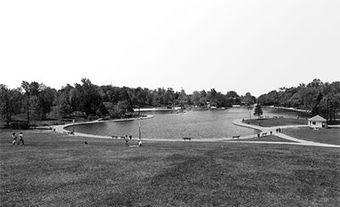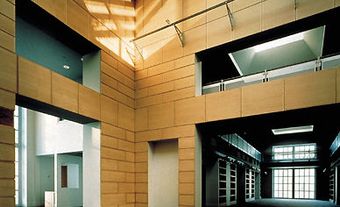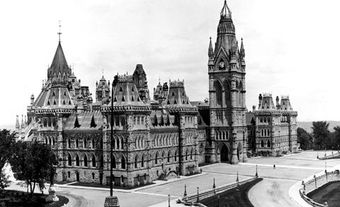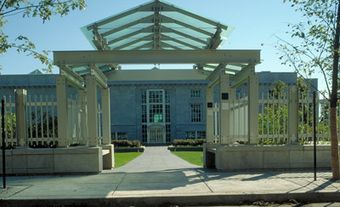Gustavo Uriel da Roza II, OC, architect (born 24 February 1933 in Hong Kong; died 24 April 2022 in Surrey, BC). Da Roza completed his architectural training in Hong Kong and moved to Winnipeg, MB in 1960. (See also Architecture.) He taught at the University of Manitoba and became well-recognized for his architectural work, including the design of the Winnipeg Art Gallery. Da Roza was of Chinese and Portuguese descent and was active among Winnipeg’s Portuguese community (see Portuguese Canadians).

Education and Early Career
Da Roza received his architectural education at the University of Hong Kong and graduated with a Bachelor of Architecture, First Class Honours, in 1955. After working in the field, he began teaching at the University of California, Berkeley. In 1960, he moved to Winnipeg to teach at the University of Manitoba where he eventually served as head of the architecture department. In addition to his academic career, da Roza continued working as an architect and established his own private practice in 1961.
Career Highlights
Da Roza's principal commissions were houses. His first dates to 1961 and he continued to design houses in Winnipeg until the mid-1970s. Da Roza also designed the Chatelaine Expo Home, which was exhibited at Expo 67. As part of a larger assessment of Winnipeg's modern architecture, University of Manitoba professor Terri Fuglem discussed da Roza's houses in detail in the 2006 anthology, Winnipeg Modern: Architecture, 1945-1975. Fuglem characterized da Roza’s architecture as blending "humour, irony, and overt references to popular culture with the more sober Modernist principles that included the influences of Le Corbusier, functionalism, Scandinavian design, and minimalism."
While da Roza is recognized for his housing designs, perhaps his most notable work is the Winnipeg Art Gallery. The building, which was constructed out of Manitoba Tyndall stone, sits on a triangular site and resembles the prow of a ship. The building was opened to the public in 1971.

As an educator, visiting critic and member of competition juries, da Roza greatly influenced Canadian architecture. His practice contributed significantly to Winnipeg's architectural style of the 1960s and 1970s, when Modernism was widely practised by a number of gifted architects. (See also Architectural History: 1967-1997.)
In 2003, da Roza served as a member of the panel for the architectural design of the Canadian Museum of Human Rights in Winnipeg. In 2007, Da Roza joined the North Surrey, British Columbia, architectural firm of Pacific Rim Architecture Ltd., in which his son, Gustavo Da Roza III, is also a practising architect.
Legacy and Significance
In 1970, da Roza was appointed honorary consul general of Portugal in Winnipeg. (See also Diplomatic and Consular Representations.) In 1988, da Roza was made an Officer of the Order of Canada. His Order of Canada citation commented on his prominent role in Winnipeg's Portuguese community and that he was "one of Canada's leading architects and teachers."
Honours and Awards
- Fellow, Royal Architectural Institute of Canada (1973)
- Officer, Order of Canada (1988)
- Queen Elizabeth II Golden Jubilee Medal (2002)
- Queen Elizabeth II Diamond Jubilee Medal (2012)

 Share on Facebook
Share on Facebook Share on X
Share on X Share by Email
Share by Email Share on Google Classroom
Share on Google Classroom






